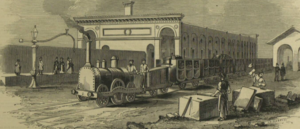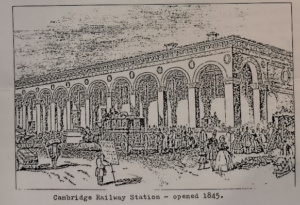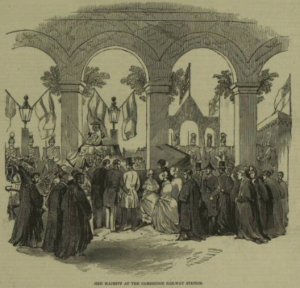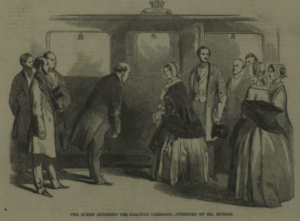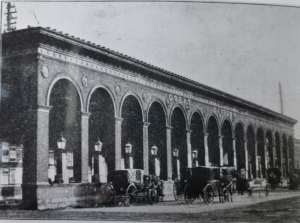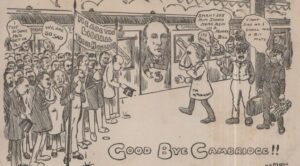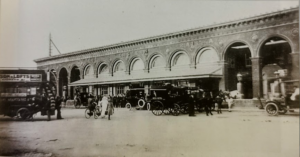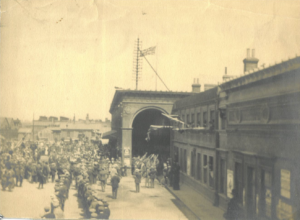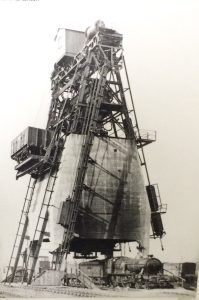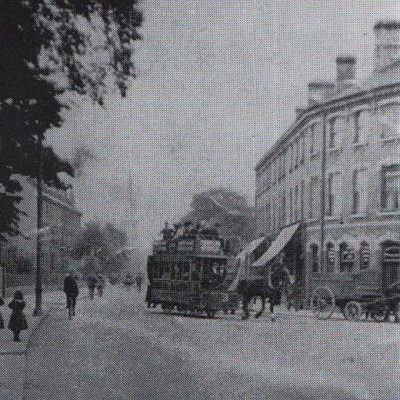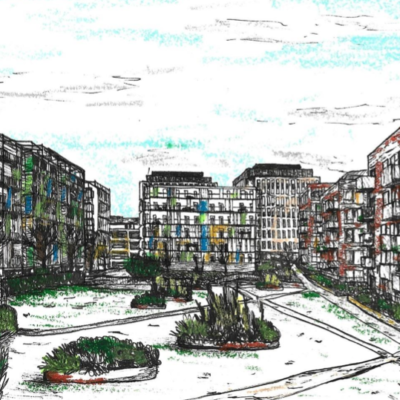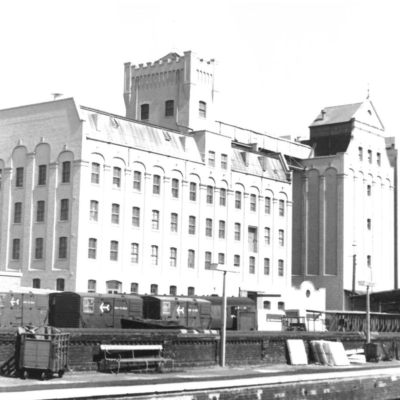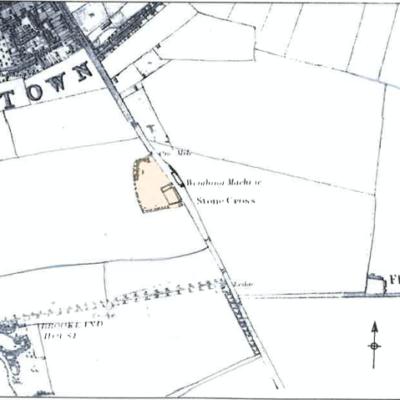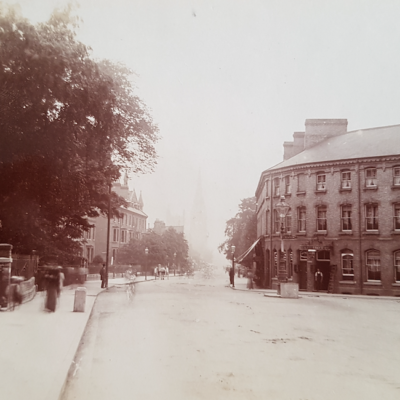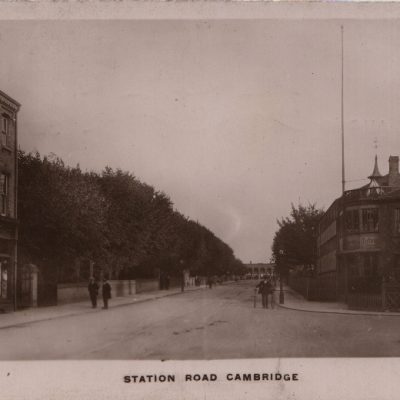Search by topic
- archaeology
- Building of Local Interest
- chapel
- charity
- church
- crime
- dressmaker
- fire
- Great Eastern Railway
- Listed building
- Mapping Relief
- medieval
- oral history
- poverty
- Public House
- Religious House
- Roman
- scholar
- school
- Then and Now
- tudor
- women
- work
- world war one
- world war two
Search by text
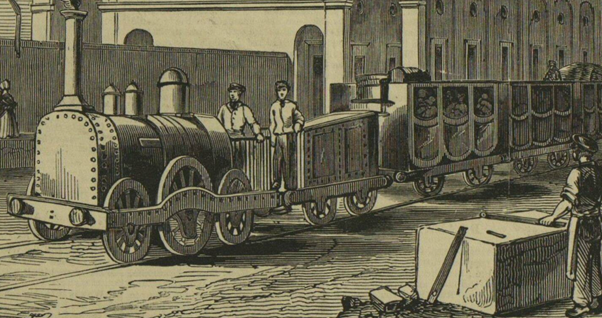
Cambridge Railway Station
History of Cambridge Railway Station
See Enid Porter’s article: The Railway
The station was designed by Sancton Wood and built by Francis Thompson for Eastern Counties Railway. It was opened on 29 July 1845. Pevsner describes it as ‘a handsome building; yellow brick, in the Italian style, with an arched porte cochere or entrance loggia of fifteen arches which was later enclosed.’
Information on the arrival of the railway in Cambridge can be found here:
http://www.creatingmycambridge.com/history-stories/the-coming-of-the-railway/
1845
The railway station opened on the 29th July 1845. There had been a great amount of excitement amongst the townspeople (the University less so). A sixteen year old Josiah Chater noted in his diary
‘stayed till ½ past eleven I saw the Grand Train come in (it is a beautiful sight I have no doubt it is very comfortable riding)’
A few days later, the following newspaper report of a train journey from London to Ely appeared in the Illustrated London News on 2nd August 1845. It took a mere four days after the station had opened, the Illustrated London News provided readers with a travel log – a ‘perfect illustrated itinerary’ – of a railway journey on the new Eastern Counties Railway Line to Cambridge and Ely. According to the article, the town was worth visiting for any would be traveller, artist, agriculturalist, or ‘man of general business’.
Having travelled more than 57 miles from London, the train arrived into Cambridge a mere 2 hours and 40 minutes later. The article boasts of an astounding 28mph! Such a speed, claims the newspaper, puts the best efforts of Cambridge’s most famous historical coachmen – Hobson and Richard Vaughan – to shame, equating their transport methods to ‘the crawling of a caterpillar’.
It possible that a 16 year old Josiah witnessed this train arrive into Cambridge. On 31st July 1845 he writes in his diary:
‘I just ran up the Mill Road to see perhaps there might be a train in I had not been there more than 10 minutes when the third class came up from Ely and one going down to Ely from London so that I had a good view of them ‘
The station itself was described as a ‘light and elegant structure, yet sufficiently substantial’ (a description that is far more flattering than some of the other stations encountered on the journey). The inside of the station is received with much approval, with its ‘commodious waiting-rooms, offices, places for luggage; and, in a word, all that is requisite for such an edifice’. The prize, however, is the front of the station, with its fifteen arches in the style of Italian architecture, the ‘general effect is exceedingly chaste and appropriate’.
The author of this travel log was, however, less kind about the journey from Cambridge to Ely. The flat lands of the Fens are described as featureless, ‘one vast plain’, with rich soil but only cows for company and a total absence of any horses. This combined with the narrow dykes and canals on either side of the “Fenny Cam” remind the author of ‘the railroad from Ostend to Bruges’. Any weariness, however, was completely removed when alighting at Ely station, whereby ‘the Cathedral bursts upon the sight in all its magnificence… The great tower is majestic; it reaches the sublimity of the style of architecture of which it is one of the most perfect specimens in this or any continental country’.
One web site that contains a very detailed history of Cambridge railway station, the companies that operated out of it and several now disused stations within the city boundary, can be found here:
http://www.disused-stations.org.uk/c/cambridge/index1.shtml
1847
Queen Victoria arrived and departed Cambridge in July for the installation of Prince Albert as Chancellor of the University.
1861
William Morris, 49, railway station master, b Devon
Eliza, 41, b Cambridge
Grace, 9, b Cambridge
Martha Samns, 16, servant, b Linton
Mark Wardle, 40, railway engineer, b Northumberland
George, 12, b Essex
Mark A, 9, b Essex
Ann Adcock, 13, servant, b Sawston
John Henny, 30, railway inspector, b Ireland
Susana, 26, b Ireland
Edward, 2, b Cambridge
Frances, 1, b Cambridge
infant, 12 hours, b Cambridge
Ellen Orchard, 50, nurse, b Cambridge
Mary Denning, 40, ladies attendant, b Dorset
Mary Denning, 15, milliner, b Surrey
(Refreshment Rooms)
Mary A Edlin, 26, refreshment room keeper, b Linton
Ellen Edlin, 6, b London
Polly Edlin, 2, b Cambridge
Henry A Edlin, 1, b Cambridge
Susan Bye, 55, b Sawston
Lucy Edlin, 27, assistant, b London
Elizabeth Bye, 17, assistant, b Linton
Ellen Riley, 21, b London
Elizabeth Measum, 25, b Hunts
Sarah Simpson, 21, b March
Mary Pont, 17, b Abingdon
Helena E Bye, 11, b Linton
For information on the Edlin family see:
1873 The Shah of Persia Hoax
In 1873 the Shah of Persia came to Great Britain for a visit lasting almost three weeks. Arriving at Dover on 16th June he was met by the Prince of Wales with whom he travelled to Buckingham Palace, where he was to stay and where a special telegraph line was placed at his disposal so that he could have direct communication with his wives in Teheran.
Josiah Chater recorded in his diary how on the 28th June the Mayor of Cambridge received news that the Shah would be making an unexpected visit to Cambridge. An official party waited at the station but this all turned out to be a hoax as was reported in the local press:
On 12th July Josiah recorded:
The telegram has been traced to Mr Neville. He is the man who was engaged in the stench business at the YMCA rooms two years ago.
The 1905 Sultan of Zanzibar hoax may have been inspired by this event.
1883
Accident on 23/10/1883:
https://www.railwaysarchive.co.uk/eventsummary.php?eventID=5166
1894
Accident at Cambridge 31/8/1894
https://www.railwaysarchive.co.uk/eventsummary.php?eventID=5875
1897
Accident at Cambridge 20/5/1897
https://www.railwaysarchive.co.uk/docsummary.php?docID=3215
1906
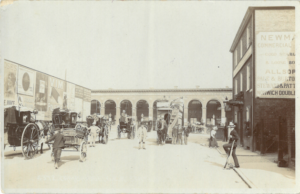
1906: On the right is the Great Eastern Railway goods manager’s office; on the left was a cabmen’s shelter, probably behind the adverts (MoC67/55)
The cartoon of Cambridge station is from a postcard that depicts the result of the January 1910 general election. The sitting Liberal MP Stanley O B Buckmaster lost his Cambridge seat to the Conservatives. Buckmaster later became Chancellor from 1915-1916 under prime Minister Asquith.
1920
Accident at Cambridge station 22/7/1920
https://www.railwaysarchive.co.uk/docsummary.php?docID=1298
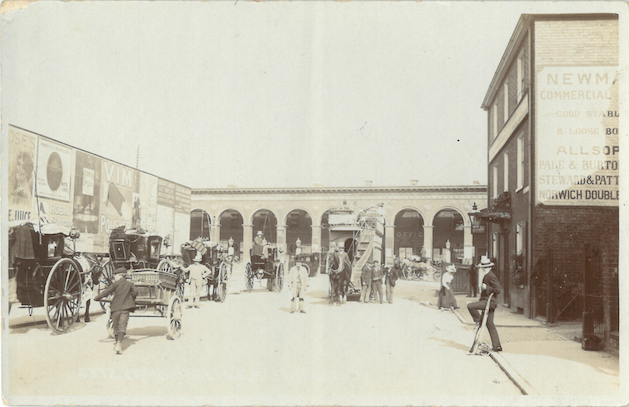
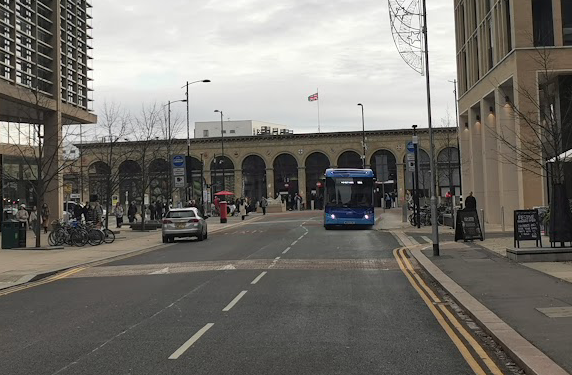
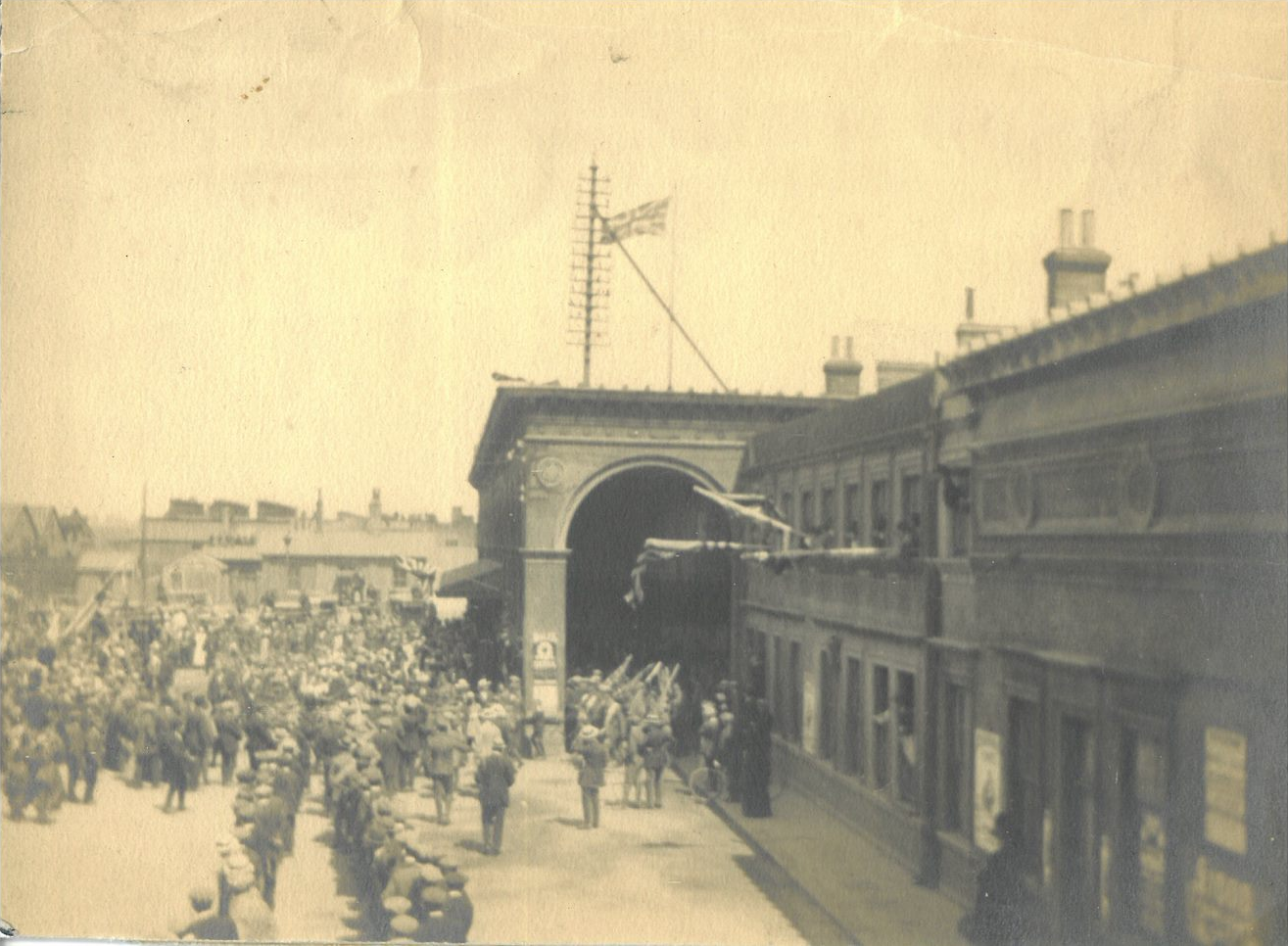
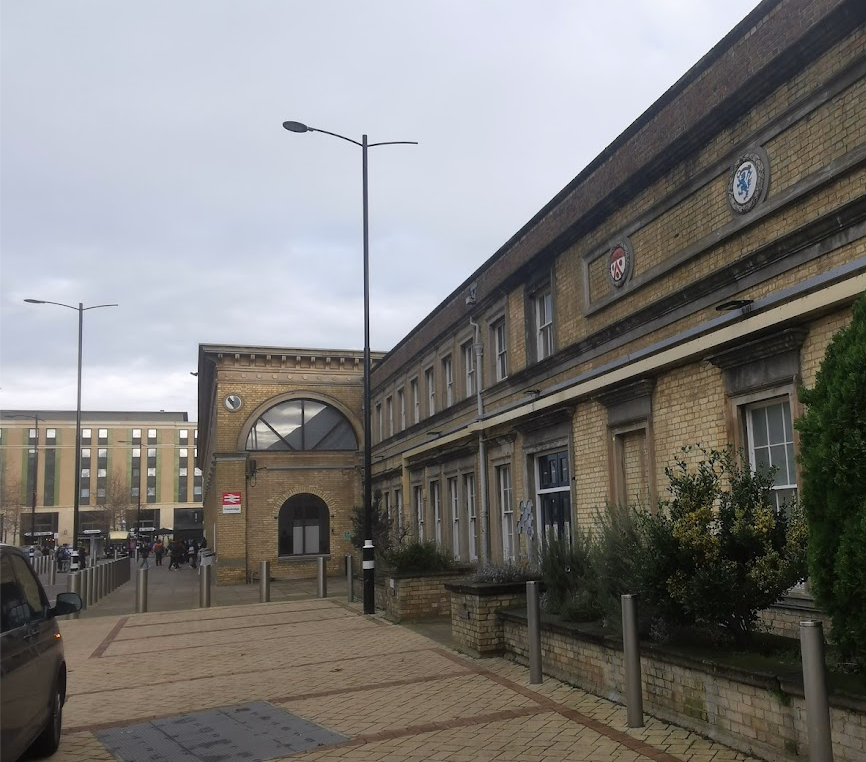
Contribute
Do you have any information about the people or places in this article? If so, then please let us know using the Contact page or by emailing capturingcambridge@
License
This work is licensed under CC BY-NC-SA 4.0





